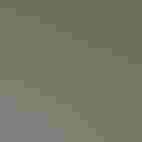Ring-necked Duck
At a Glance
Although it mixes freely with other diving ducks on large lakes in winter, the Ring-neck is also found on small, tree-lined ponds, and associating with dabbling ducks on shallow waters. A strong and fast flier, it is able to take flight by springing up directly from the water, without the laborious take-off run of most diving ducks. Despite the name, the ring on its neck is almost never visible.
All bird guide text and rangemaps adapted from Lives of North American Birds by Kenn Kaufman© 1996, used by permission of Houghton Mifflin Harcourt Publishing Company. All rights reserved.
Category
Duck-like Birds, Surface Feeding Ducks
IUCN Status
Least Concern
Habitat
Coasts and Shorelines, Freshwater Wetlands, Lakes, Ponds, and Rivers, Saltwater Wetlands
Region
Alaska and The North, California, Eastern Canada, Florida, Great Lakes, Mid Atlantic, New England, Northwest, Plains, Rocky Mountains, Southeast, Southwest, Texas, Western Canada
Behavior
Direct Flight, Erratic, Swimming
Population
2.000.000
Range & Identification
Migration & Range Maps
Migrates in flocks. Migration is relatively late in fall and early in spring.
Description
14-18" (36-46 cm). Male has black head and back; white bar separates gray sides from black chest. Despite name, brown neck ring is very hard to see, but rings on bill are obvious. Female mostly gray-brown. Shows wide pale area near base of bill, usually less contrasty than on female scaup; similar to female Redhead but grayer, with more peaked head, more obvious bill ring.
Size
About the size of a Crow, About the size of a Mallard or Herring Gull
Color
Black, Brown, Gray, Purple, White
Wing Shape
Pointed
Tail Shape
Rounded, Short, Square-tipped
Songs and Calls
Soft purring notes, but usually silent.
Call Pattern
Flat, Simple
Call Type
Croak/Quack
Habitat
Wooded lakes, ponds; in winter, also rivers, bays. In summer on freshwater marshes, ponds, and bogs, mainly in openings in forested country. In migration and winter on ponds, lakes, slow-moving rivers, sometimes on coastal estuaries, but generally not on saltwater bays.
Sign up for Audubon's newsletter to learn more about birds like the Ring-necked Duck
Behavior
Eggs
8-10, sometimes 6-14. Vary in color: olive-gray, pale brown, pale buff. Incubation is by female only, 25-29 days.
Young
female leads young to water 12-24 hours after they hatch; young may return to nest at night. Unlike many diving ducks, female and brood often hide in marsh rather than seeking safety on open water. Young find their own food, are capable of flight 49-55 days after hatching. Female may remain with young until they are old enough to fly, unlike most ducks.
Feeding Behavior
Forages by diving, usually in water a few feet deep. Also forages at surface and sometimes up-ends in shallows. Opportunistic, it may move into flooded fields to feed.
Diet
mostly aquatic plants, insects. Diet varies with season and habitat. Feeds on seeds, stems, and roots of many aquatic plants, including pondweeds, sedges, smartweeds, grasses, algae, and others. Also eats aquatic insects and mollusks. Young ducklings feed mainly on insects.
Nesting
Pair formation activity begins in winter. Courtship displays by male include laying head far back and then thrusting it forward; also swimming with head feathers erected, nodding rapidly. Nest site is on dry hummock, clump of brush, or mat of floating vegetation, close to open water. Nest is shallow bowl of grasses, sedges, weeds, lined with down.
Conservation
Conservation Status
Numbers apparently stable. Since about the 1930s, has become a much more widespread and numerous breeding bird in eastern Canada and northern New England.
Climate Threats Facing the Ring-necked Duck
Choose a temperature scenario below to see which threats will affect this species as warming increases. The same climate change-driven threats that put birds at risk will affect other wildlife and people, too.









